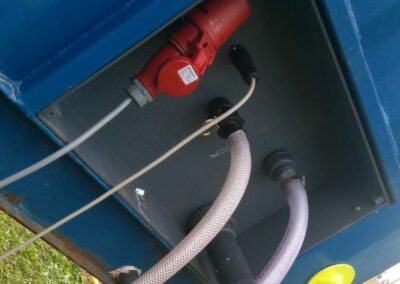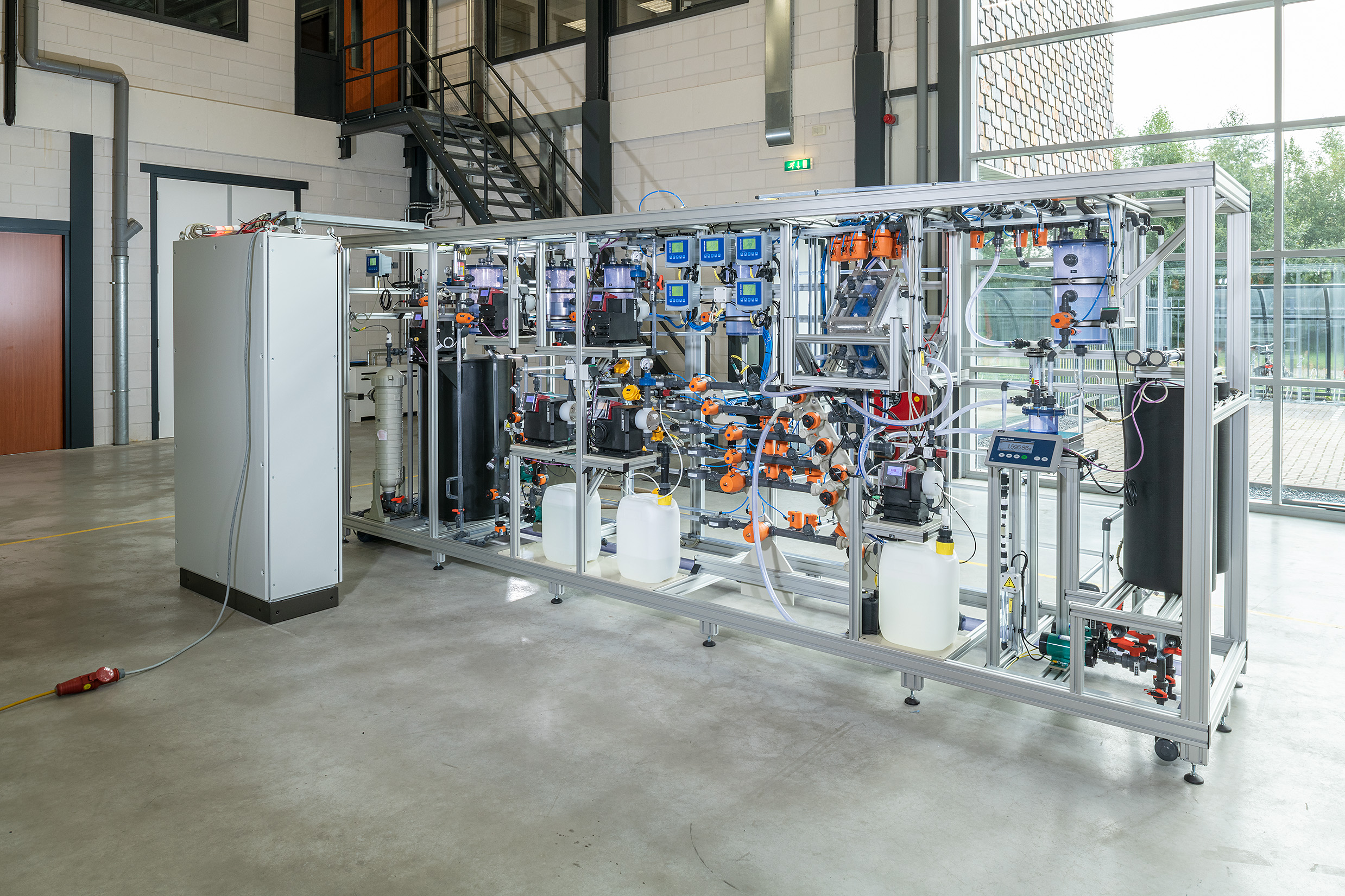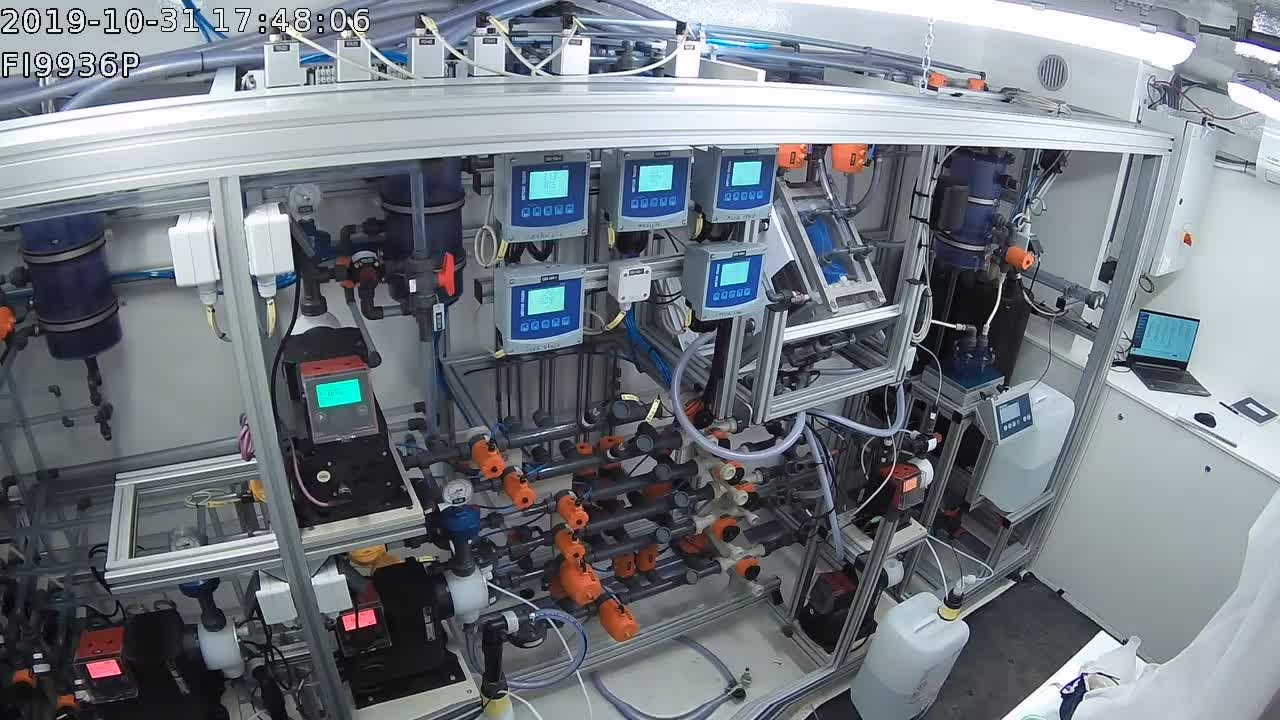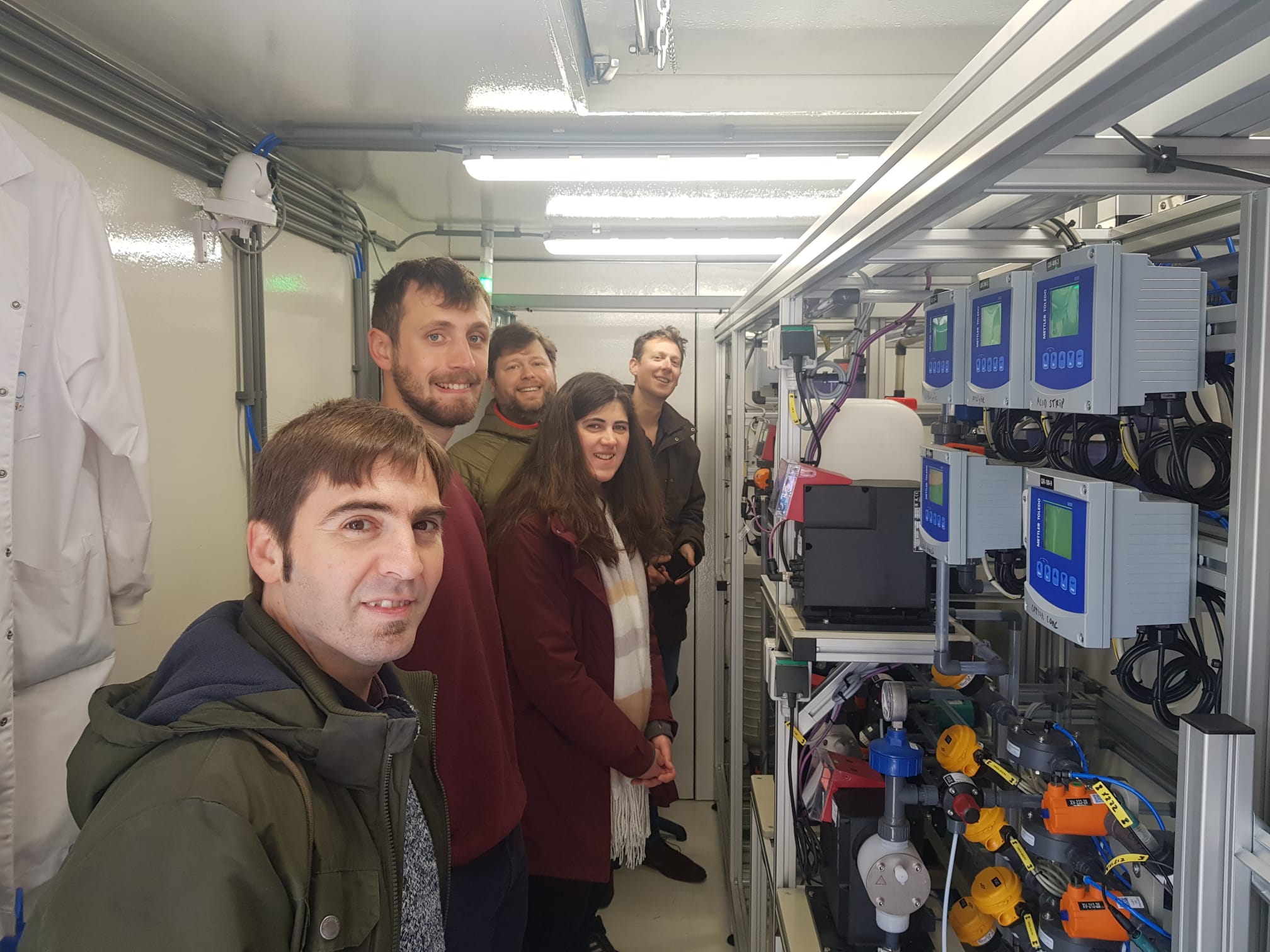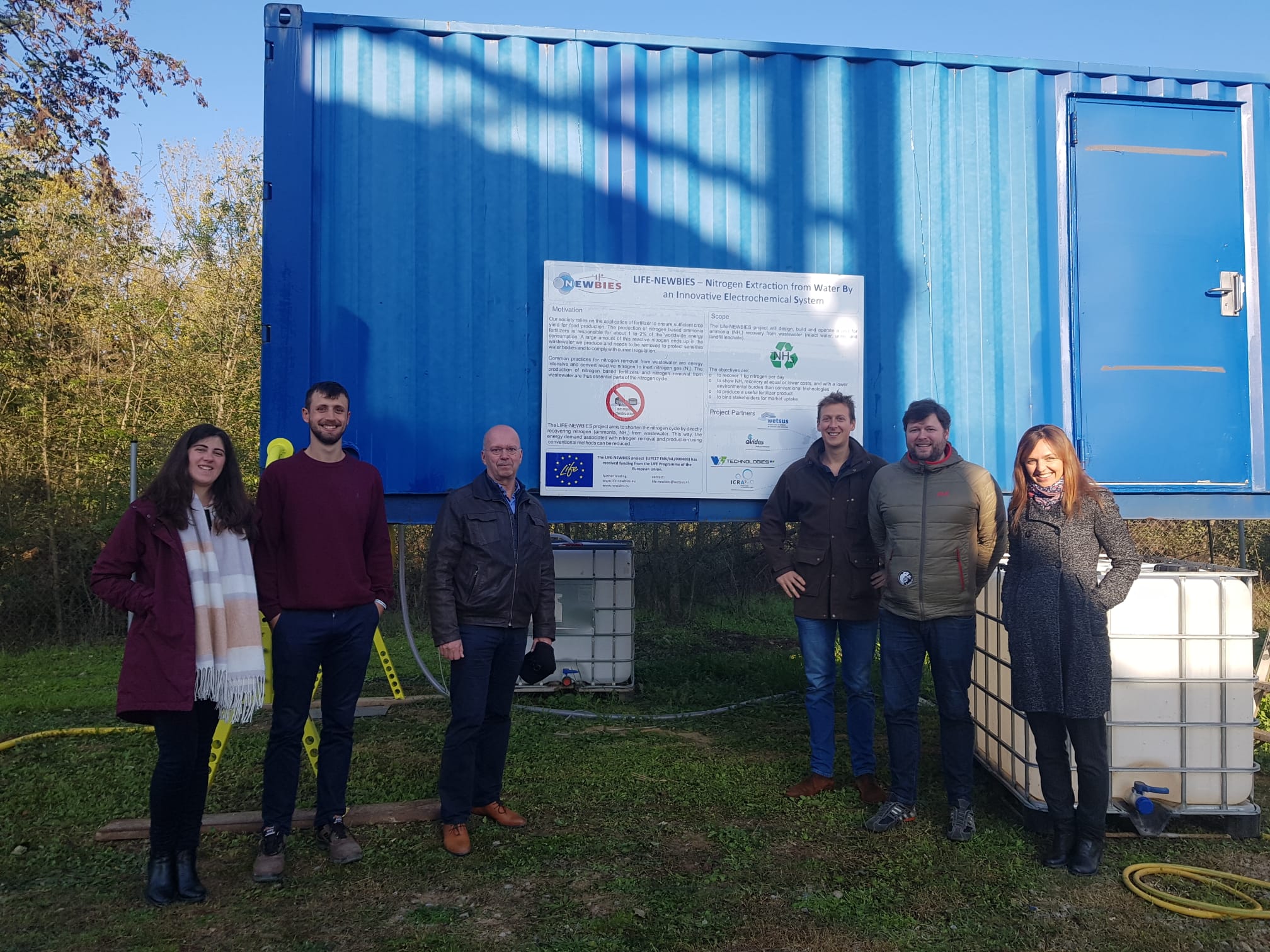N.E.W.B.I.E.S. Pilot Installation
Current status: project finished
Last updated: 16 may 2022
On this page, you’ll find more information on the pilot installation that has been developed as part of the N.E.W.B.I.E.S. project.
Along with the most notable (physical) characteristics of the installation, up-to-date Key Performance Indicators (KPIs) of the installation as they result from operation on different waste waters will be presented.
Design principles
- Removal and recovery of 1 kg N / day from selected waste waters
- At a electrical energy expense of less than 2.75kWh per kg N recovered
- automated cleaning-in-place procedures to minimize waste pre-treatment requirements
- future upgradeability – omit use of external stripping acid
Specifics per test site
Phase 1: Reject water from digestate sludge centrifuge
Location: Municipal Waste Water Treatment Facility “Trargisa”, Girona, Spain
Period of pilot operation: October 2019 – July 2020
Achieved KPIs:
- Ammonium Sulfate Concentration in the product: up to 150 g / L
- Coulombic Efficiency towards recovered NH4: 20-30%
- %Removal efficiency: 60 % max
- Energy demand per g N recovered: 10-20 kWh / kg N
Site/waste-specific remarks: Excessive CIP required due to too high Ca : N ratio
Phase 2: Human urine (source separated, hydrolyzed)
Location: Eco-community Arneco, Arnhem, The Netherlands
Period of pilot operation: July 2020 – February 2021
Achieved KPIs:
- Ammonium Sulfate Concentration in the product: up to 250 g / L
- Coulombic Efficiency towards recovered NH4: 30-40%
- Removal efficiency: up to 80%
- Energy demand per g N recovered: 6-12 kWh / kg N
Site/waste-specific remarks: N concentration in hydrolyzed urine was somewhat lower than expected due to flushing water dilution (1 g N / L instead of 3-4 g / L anticipated)
Phase 3: Landfill leachate
Location: Evides operated Landfill site, Nieuwdorp, The Netherlands
Period of pilot operation: March – September 2021
Achieved KPIs:
- Ammonium Sulfate Concentration in the product: approx. 200 g /L
- Coulombic Efficiency towards recovered NH4: 13%
- Removal efficiency: 30%
- Energy demand per g N recovered: 28 kWh / kg N
Site/waste-specific remarks: due to high sodium content of the wastewater, a substantial part of energy was directed towards sodium transport and not to recovery of ammonia. This wastewater was therefore not deemed compatible with the developed technology.
Technical Specifications
N.E.W.B.I.E.S. Pilot installation- Skid manufacturer: LPS B.V.
- Process Automations: Pro-Control B.V.
- Dimensions: 5.00m x 2.00m x 1.00m (LxHxW)
- Fully automated CIP for unattended continuous operation
- Volumetric treatment capacity: approx 1m³ per day
- N-Removal efficiency: 60-90%
- Energy efficiency: kWh per kg N
- Max. product concentration: 15-20 wt% product
- Total ED-membrane area: 3.2 m²
- Stripper-acid-free operation
Pilot installation Progress updates
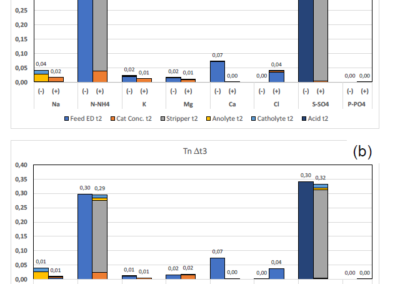
PP#13 Digestate Phase Final Report
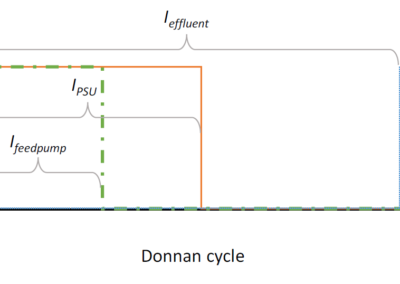
PP#12 Urine Phase Final Report
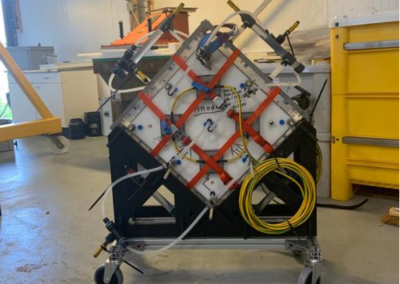
PP#11 – Leachate phase final report
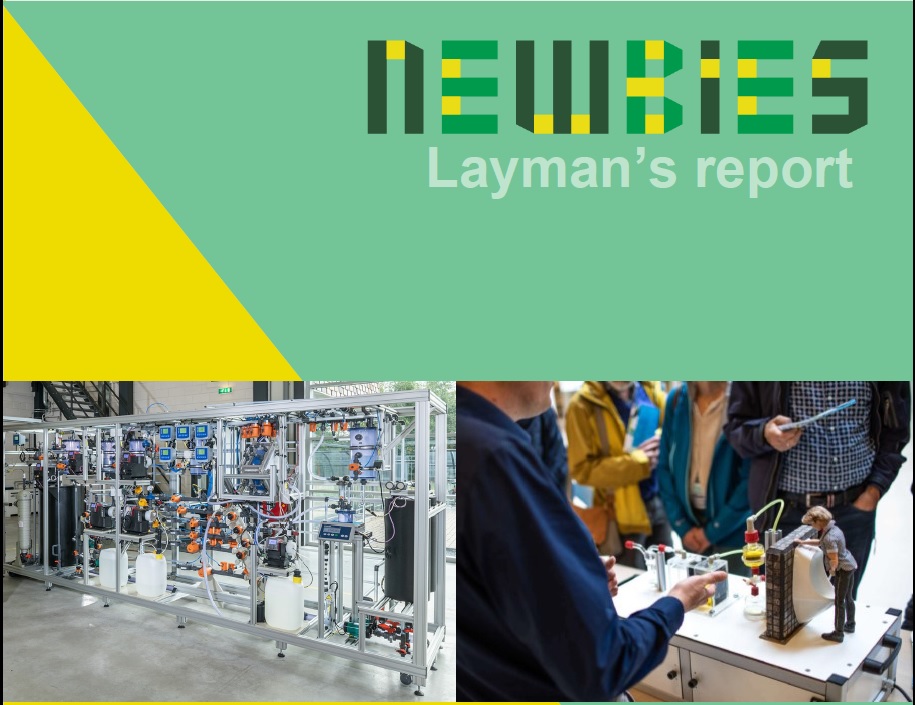
PP#10: Layman report
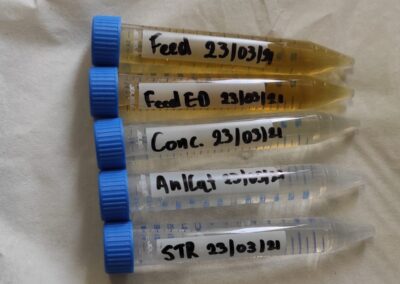
PP#9: Preliminary results on leachate
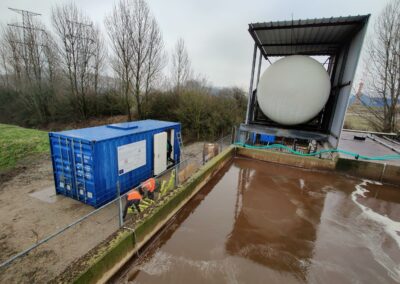
PP#8: Last testing site: pilot commissioning on Landfill Leachate
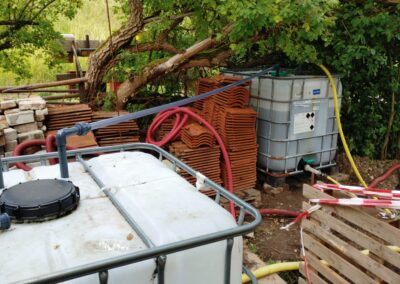
PP#7: Second results on treatment of urine
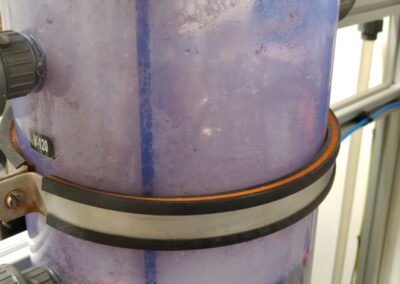
PP#6: First results on urine
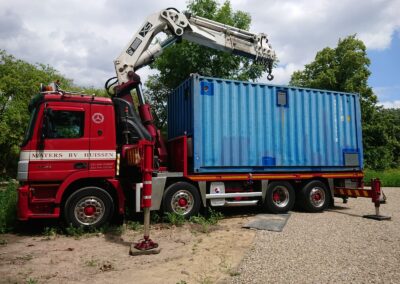
PP#5: Pilot commissioned on urine
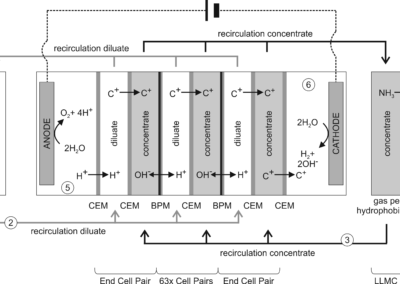
PP#4: Second results on digestate
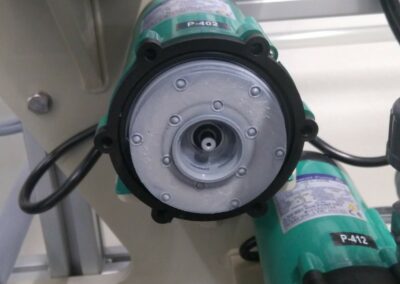
PP#3: Facing reality: first results on digestate
